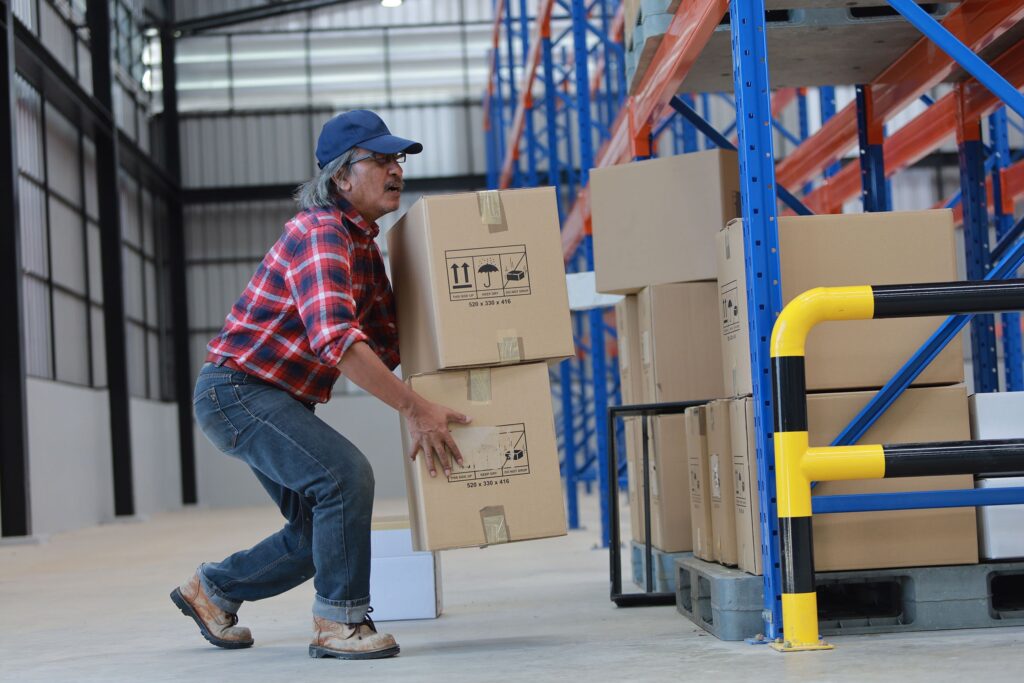Following a year of unprecedented stress and unforeseen changes in workplaces in America and around the world, employers are looking ahead through 2021 and beyond to determine how to better support their employees’ safety and wellbeing. With the temporary shift of some 60% of U.S. workers to home-based work—of which as many as half may remain as permanent work-from-home employees—and workplaces still adapting to evolving public health guidelines, having a proactive ergonomics plan in place has never been more important for employers hoping to cut workers’ comp costs and reduce absenteeism.

Unusual times call for inventive solutions, and new tools for ergonomic monitoring and support are revolutionizing how safety leaders design their ergonomics and general safety plans. Looking beyond the surface level with real-time data tools and new technologies, many employers are already catching on to the latest wave of ergonomic solutions for front-line workers and desktop employees alike. Today’s workers need advanced ergonomic solutions and the latest technology to protect their safety and keep overhead costs low.
Let’s assess where ergonomics stands in the world of workplace safety, then we’ll review some of the top ergonomic solutions to prevent MSDs and other injuries in 2021.
The State of Ergonomics in 2021
Ergonomics remain a central concern for employers of all types this year, and with many businesses and agencies working hard to catch up from delays incurred in 2020, the need for ergonomic support for employees is likely to stay high. In 2019, employers across the nation paid an average of $1 billion per week on direct costs for workers’ compensation claims alone, not counting direct costs that OSHA estimates can mount up to 4 times the direct costs. Meanwhile, musculoskeletal disorders (MSDs) and related injuries remain a major driver of those costs, accounting for roughly a third of all workers’ compensation claims.
The connections between MSDs and the field of ergonomics are well-documented, and it’s clear that businesses are planning to continue to address their injuries issues in part by improving or scaling up their ergonomics programs. In their 2020 survey of EHS industry professionals, Verdantix reported that improving ergonomics standards and programming was a top priority for over a third of respondents, indicating that safety leaders are planning to keep ergonomics at top-of-mind in the coming year, even after the COVID-19 pandemic created unpredictable conditions and disrupted budgets. Indeed, the same survey indicates that safety leaders are planning an average increase in safety budgeting of 5%. Meanwhile, the researchers at MarketsandMarkets released a report in January of 2021 predicting that the workplace safety industry would balloon from an estimated value of $12.1 billion in 2020 to $19.9 in 2025, indicating that employers are intent on enhancing their safety programming and working to invest in solutions that will raise ergonomic standards and keep workers safe.
How will they do it? Let’s review some trends in workplace ergonomics for 2021.
Ergonomic Safety Strategies for 2021
- Ergonomics software leads the way
Technology is poised to become a central component of workplace safety programs, and software has become a vital tool for employers looking not just to provide training and reinforce best practices but also to analyze employee behaviors and workstations for risk factors. Artificial intelligence is already a key tool for safety managers seeking a data-driven perspective on workplace ergonomics and has been integrated into various software platforms to identify risk factors that human observers simply can’t see.
Solutions such as DORN’s HealthyWorking PRO are invaluable for creating detailed workplace safety reports that provide a holistic picture of the work site while also helping employees learn about ergonomics and self-correct unsafe mechanics and posture.
- Wearable devices are becoming must-haves for high-risk employees
Bio-ergonomic feedback technology is making serious waves in the workplace safety industry, providing employers with an accurate way to monitor and track risk factors for MSDs and other ergonomic injuries in real time. These devices take many forms and can tackle a range of workplace safety issues. On one end, simple wrist-mounted fatigue monitors can track exertion levels and report abnormalities to management, helping head off dangerous fatigue caused by poor ergonomic mechanics. Other companies, especially manufacturers, have begun adopting sensor-embedded work suits and uniforms, which monitor exertion of specific muscle groups and track certain common motions.
The sensors transmit this data to safety managers to be viewed in real time, helping create detailed data profiles of departments and individual tasks that can inform ergonomic adjustments and help relieve employees’ pain, preventing discomfort from turning into a costly ergonomic injury. Even more advanced are the exoskeletons now being used by some manufacturers. We covered this topic in a recent podcast with Matt Marino, Director of Ergonomics and Human Factors at HeroWear, who explained how exosuits and exoskeletons can augment workers’ strength and provide stability for difficult, high-effort tasks. These can also support workers’ arms, head, and neck for tasks that involve reaching overhead.
- Quantitative on-site ergonomic assessments are making a post-COVID comeback
Even though the new age of AI and technology have made supporting worker safety easier, traditional solutions that center human analysis are still essential for a strong safety culture. While many businesses were forced to scale back or cut their safety programs in 2020 due to the pandemic, many are discovering that on-site ergonomics support is even more essential now than it was before. The absence of some safety services has made their importance more obvious to safety professionals, many of whom are now working to rejuvenate their safety programming with on-site ergonomic assessments that provide a holistic, detailed picture of the ergonomic factors of any worksite. From individual workstation setup, tools, and biomechanics training to departmental analysis of MSD risk factors, an in-person review by a qualified ergonomist can provide a roadmap toward better safety standards and outcomes that you simply can’t achieve with other ergonomic solutions.
- Virtual office assessments connect employees with ergonomic specialists
To complement other solutions that employers can implement to support ergonomic standards, providers have created virtual assessment tools that allow ergonomists to assess an employee’s home-based workstation or office-based desktop. Using convenient, readily available online communication tools like video conferencing software, ergonomists can connect directly with employees remotely to examine the work environment and provide guidance on adjusting desktop elements, seating, monitor height, and other factors while also offering exercises, stretches, and self-massage techniques that can help employees relieve their own discomfort.
Once You’ve Determined Ergonomic Risk, What Comes Next?
Whether you collect ergonomic data on-site with a thorough in-person quantitative assessment or through various tech tools (predictive software, wearable devices, etc.), it’s up to the employer’s safety team to begin implementing adjustments. The most common and effective improvements include:
- Enhanced training, conditioning, and stretch-and-flex programs
- Workstation and tooling adjustments
- Manual deep-tissue therapy to reduce and eliminate pain for employees with high MSD risk factors
- Ongoing reminders and reinforcement delivered to employees in real time via desktop software
At-home and remote employees can also benefit from additional virtual support and mechanics training.
Conclusion
As the workplace safety industry continues to evolve and grow, ergonomics remains a foundational element of safety programs in virtually every industry. Ergonomic-related pain and discomfort costs employers some $635 billion each year, and now more than ever, businesses are looking to protect their employees, budgets, and bottom lines from those potentially staggering costs. Fortunately, innovative safety leaders continue to develop and refine the technology and tactics they use to stave off the costs MSDs and other soft-tissue injuries in the workplace, from predictive software equipped with artificial intelligence to smart work suits and other wearable devices. With proven results in the form of lower costs and reduced injury rates, these solutions and others like them are poised to become essential tools for employers hoping to improve their workplace ergonomics.


